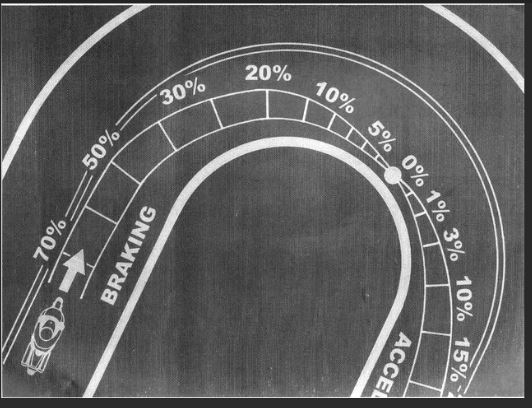I'm going to re post a diagram that stig posted because it is a good one.

The numbers in this diagram are just an example. The actual used in trail braking can vary a lot. This diagram shows a fairly aggressive street rider using trail braking. How do I know that? Two reasons. A racer would be probably be braking harder than 70% approaching the curve. A racer would not normally used a delayed apex line as shown. A delayed apex is not the fastest way around the track but it is considered the safest line on the street.
So what exactly is happening in the diagram.
The rider is braking pretty hard approaching the curve. Before starting to turn the riders lightens up on the brakes from 70% to 50%. Then as he goes more into the curve he lightens up on the brake as he leans more until he is off the brake by the apex and then accelerates after passing the apex, increasing acceleration as he starts to straighten the bike up. He used a delayed apex to stay outside and increase his sightline longer. By the time he hit the apex he could probably see the corner exit before starting to accelerate. If he was racing he would have apexed midway through that curve.
What is important, although the diagram doesn't show it, is that the rider never exceeded 100% traction on his tires. That is the the reason so many people are afraid to brake and lean at the same time. They think they will lose traction and crash. They think it takes an expert rider to balance braking and turning and not crash.
It does take an expert to do it if you are trying to use close to 100% of your tires traction as a racer does. However, on the street even experienced riders try to leave a margin for error. In the diagram the rider was only using 50% of his traction when he started turning. He had 50% left. I'll bet the average street rider rarely uses more than 50% of his available traction when turning.
Let's suppose instead of 50% braking the rider only used 20% when starting the curve and then tapered it off. That's still trail braking and certainly not dangerous. Like any technique, trail braking should be learned by starting real easy and then increasing the level you are doing it at.
But why not just just doing all your braking before starting the curve? What is the advantage of trail braking?
I'll discuss that next but first another video: